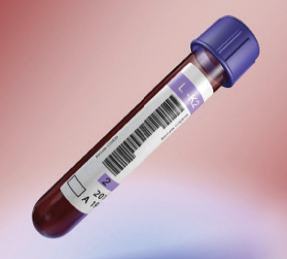
Traditionally, it takes a long time for biomarkers to be validated, let alone for a therapy trial to be completed.
Image Credit: Pasieka/sciencesource.com
ROME, Italy—The traditional approach to trials to assess new biomarkers and related treatments has largely been inefficient, and a better strategy is needed to make stratified treatment available for patients more quickly, an expert said at EULAR 2015, the annual congress of the European League Against Rheumatism (EULAR).
Mahesh Parmar, PhD, director of the Medical Research Clinical Trials Unit at the University College London, has helped develop a more sophisticated trial design in oncology—the field, as he put it, that might be the “poster child” for biomarkers predicting drug response.
In oncology, some of the problems with trials on biomarkers traditionally is that it takes a long time for biomarkers to be validated, let alone for a therapy trial to be completed; there is little that’s gained for the biomarker-negative groups in the trials; and so many of the trials end unsuccessfully.
“By and large, we’ve been typically wrong about a potential link between a biomarker, a treatment and a disease,” Dr. Parmar said. “We’ve been wrong much, much more often than we’ve been right. And if that’s true in oncology, it’s probably likely to be true—in spades—in rheumatoid arthritis. So be ready for lots of stratified medicine trials to show negative results.”
Focus4
The more sophisticated design at University College London, called Focus4, is a colorectal cancer trial that essentially multi-tasks by assessing several biomarkers and related therapies using trials within a trial.
There are five arms on the trial: one on each of four suspected biomarkers that haven’t been fully characterized or fully validated, and a fifth with patients that don’t test positive for any of the biomarkers.
The patient pool for each arm is “enriched” with patients with that biomarker, but it is not a biomarker-positive or negative arrangement. A full biomarker panel is done on all patients; if they’re positive for a certain biomarker, they’ll go into that arm of the trial.
If a patient passes two “lack of activity” stages, they move on to the Phase 3 stage to evaluate whether the biomarker is specific to that treatment. If they don’t pass those stages, another arm is considered, if that’s appropriate.
The design maximizes the possibility of finding promising new treatments and rejecting those that are minimally active, Dr. Parmar said. The umbrella structure also makes it more feasible for less common biomarkers to be tested.
